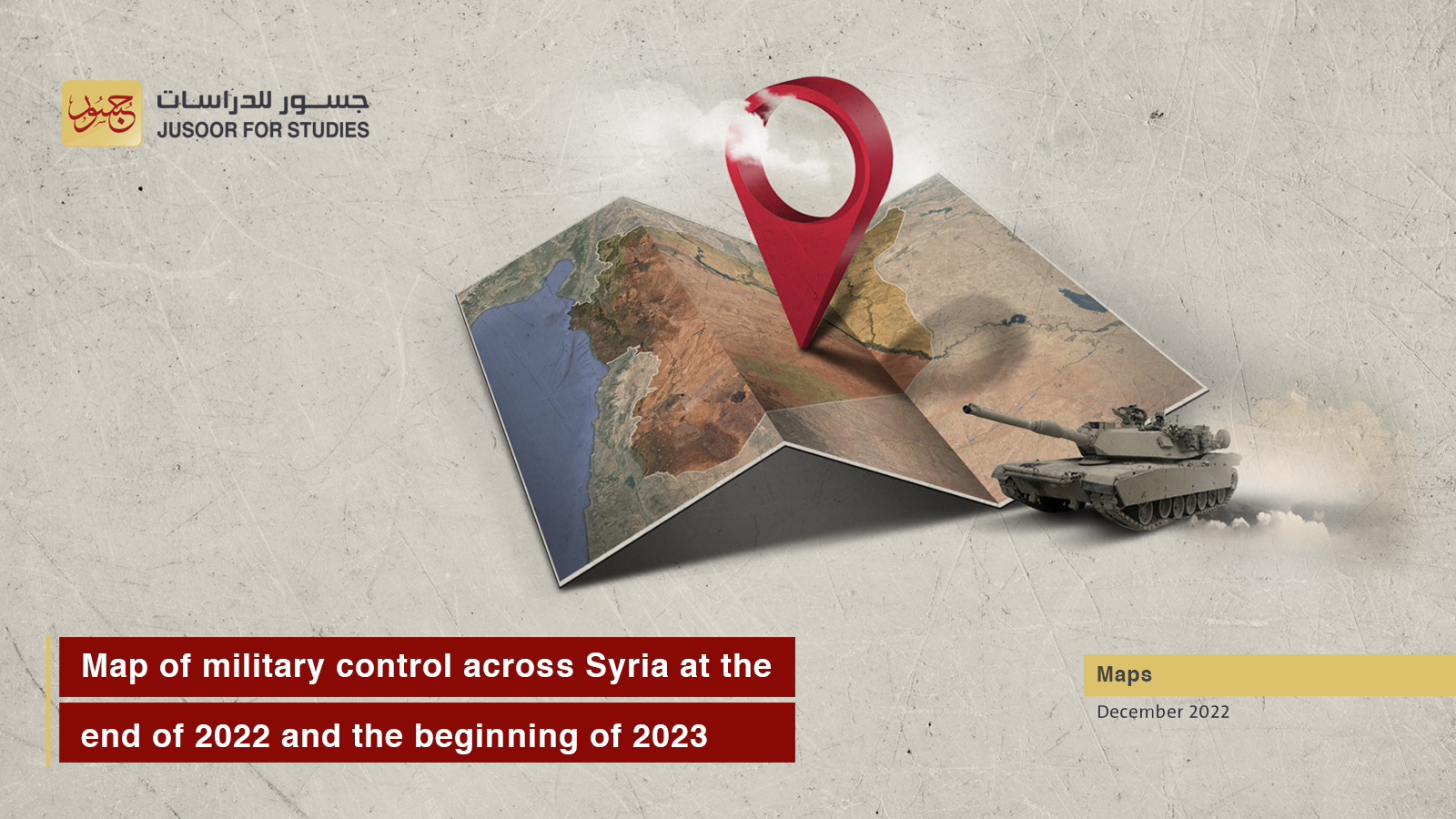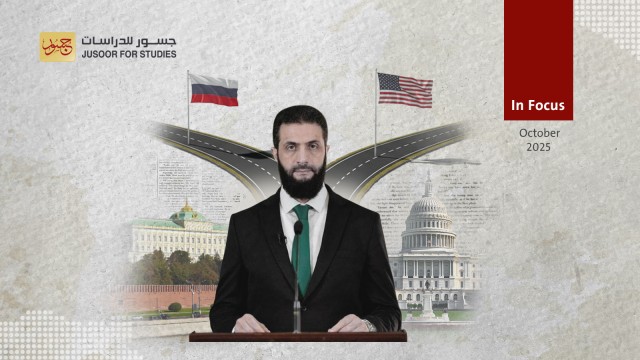Map of military control across Syria at the end of 2022 and the beginning of 2023
No changes occurred on the map of military influence in Syria until the end of 2022; as the areas of control and the contact lines, separate the local forces on the ground, and the proportions of control remained completely constant between the parties to the conflict in Syria, which were documented at the end of February 2020.
Under the cease-fire agreement between Türkiye and Russia on March 5, 2020, the Syrian map witnessed the longest period of calm since the outbreak of the conflict, i.e. 33 months, during which areas of control remained fixed between the Syrian regime forces, the Syrian opposition factions, and the Syrian Democratic Forces (SDF) .
According to the map of military control released by the Jusoor Center for Studies, the percentages of control of these forces on the ground are as follows:
- The opposition factions maintained their control ratio, which is: (10.98%) of the Syrian geography, distributed in Idlib, northern Aleppo, Tal Abyad in Raqqa, Ras al-Ain in al-Hasakah, and "Zakf" and "AlTanf" “55 kilometer area” in the south eastern Syria.
- The Syrian regime maintained its control ratio, which is: (63.38%) of the Syrian geography; as it almost completely controls the coastal, central and southern governorates of Syria, and parts of the eastern governorates and Aleppo.
Although the regime has fully militarily controlled Daraa governorate since July 2018 under the settlement agreement, this control is still fragile in light of the presence of military groups that have been active against its forces since then. This relatively applies to As-Suwayda governorate.
- The Syrian Democratic Forces (SDF) maintained their control ratio: (25.64%) of the Syrian geography, which is as same as the one that was registered since November 2019 . It includes large parts of the governorates of Deir ez-Zor, Raqqa, and al-Hasakah, and parts of Aleppo. Recently, it has become possible to divide the areas of SDF control according to the deployment of the military bases of the US-led international coalition or the Russian forces; as the bases of the Russian forces are mainly spread in the areas from which the coalition forces withdrew, in addition to the Russian main base at Qamishli Airport.
- On the ground, despite ISIS has not regained any military control over Syrian territory since February 2019, its cells continued to be active against the regime, the Russian and Iranian forces. Accordingly, in 2022, the organization launched its largest military operation since its loss when it tried to storm Al-Sinaa prison in Al-Hasakah in mid-February.
In general, the lack of change in the control ratios is due to the commitment of the regime and the opposition factions to the cease-fire within the framework of the Moscow memorandum that was signed between Türkiye and Russia on March 5, 2020. Despite that fact, however, widespread breaches occurred in the contact lines in Idlib and on the fronts of Tal Rifaat, north of Aleppo. Such breaches are to be added to the unprecedented escalation against the SDF by Türkiye, as the latter launched two air operations against SDF , namely: the Winter Eagle in February and the Sword Claw in October.
In fact, the calm continued despite the escalation that was taking place in areas across Idlib and northern Aleppo, including Russian air strikes and artillery barrages against military and civilian facilities in the Syrian opposition areas.
It is not likely that the map of military control in the first half of 2023 will witness any change in the proportions of control between the local forces; due to the absence of sufficient indications to carry out a military operation against the SDF, or the Syrian regime’s inability to launch a new attack against the opposition areas. However, any possible military collapse that may occur on the map may be in the second half of 2023, and it is not excluded that it will affect the frontlines of southern Syria. 








